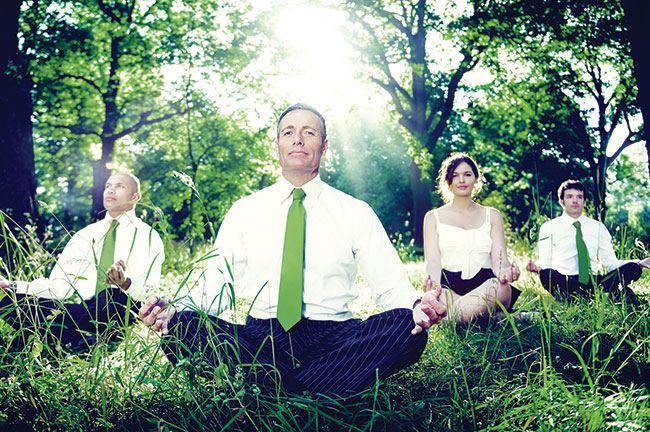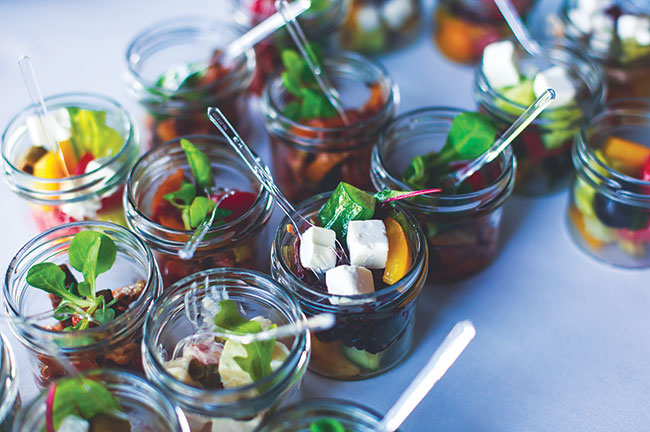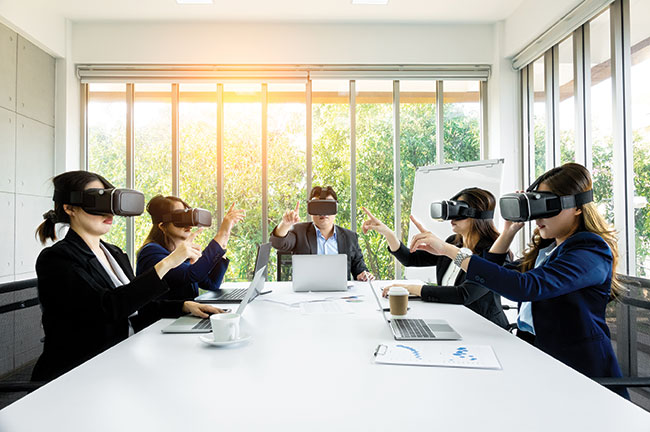Meetings, like the world around them, are changing at warp speed, and keeping up on the latest trends is imperative for planners wishing to cater to the evolving desires of attendees.
We checked in with Mark Cooper, CEO of IACC, which produces the annual Meeting Room of the Future Report, to get his take on the most interesting conference industry trends shaping 2019 and beyond.
Chatbots with artificial intelligence, casually collaborative furniture setups, walking meetings and ultra-healthy F&B are just a few of the ways meetings are being reinvented.
Meetings Today: It seems we’re in the most accelerated period of change when it comes to meetings innovation. To what do you attribute this, and how are attendee expectations continuing to evolve?
 Mark Cooper: Technological advancements and how we use them to communicate differently has been a clear influencer in my mind and will continue to drive a shift in customer demand in the coming years. Incoming generations such as Millennials and Generation Z have the ability to accept and adopt very quickly.
Mark Cooper: Technological advancements and how we use them to communicate differently has been a clear influencer in my mind and will continue to drive a shift in customer demand in the coming years. Incoming generations such as Millennials and Generation Z have the ability to accept and adopt very quickly.
We will see an even greater emphasis on experience creation by event planners, an increase in wellness trends as well as healthier and more flexible food and beverage options and meeting spaces.
Meetings must mold themselves around our changes in behavior and values. Meetings are also becoming less corporate and more relaxed.
In our latest global Meeting Room of the Future Report, 72 percent of our member venues reported an increase in requests for a change in the design of their meeting and event spaces to include more “homey” settings, such as sofas and comfy chairs.
It’s all about making a comfortable environment for connecting and collaborating, and that is something we’d expect to grow in the future.
MT: Is there an overarching way IACC has been educating planners and suppliers and satisfying attendee demand when it comes to trends in the industry?
MC: IACC’s Meeting Room of the Future Report is built on a foundation of leading professionals’ views from a global perspective, and this will remain important in the future, as we create trends and predictions that people can trust. We seek credible opinions and valuable insights from global venue operators, industry experts and suppliers to understand how they are responding to the changing expectations and needs of meeting planners.
We then take these extremely valuable insights, alongside expert opinion, to formulate the latest global and regional trends on consumer behavior, meeting room space, design, technology, internet capabilities and food and beverage, among other topics.
[Related Content: Las Vegas Dives Head First Into the Future of Meetings]
In a separate survey and report, we turn the tables and ask the meeting planners the same set of questions. The 2019 report, which will be released in July, will carry their perspective.
We also believe that face-to-face events are perfect channels for professional and business growth. Therefore, we ensure that IACC continues to build innovative programs at our events to ensure our members and attendees stay ahead of the curve with regard to industry trends.
For instance, during our 38th edition of IACC Americas Connect in April 2019, which had an overarching theme of “Radical Innovation, Change Everything!,” former computer hacker turned inventor and innovator Pablos Holman taught attendees how to disrupt the meetings industry, and as a result, resolve some of the industry’s biggest problems.
MT: Experience design and creating immersive, engaging environments and activities for attendees has been an evolving trend over the past several years. How do you see this trend playing out in 2019?
MC: Experience creation continues to be at the heart of meetings.
Today’s delegate seeks an enriching and memorable experience from all aspects of the venue, from design to features, including:
- Wi-Fi quality.
- Inspiring and healthy food and beverages (including interesting alcohol-free options).
- Unique networking spaces and more informal settings.
They will also be watching the waste that comes from their event and will not tolerate full buffet tables of spent food being swept into the trash bag.

MT: Incorporating wellness into agendas is becoming increasingly important for planners and attendees. What are some of the unique ways you see this trend further blossoming?
MC: Personally, I think more can be done for delegates during break-out sessions and refreshment breaks, whether that’s hosting food demonstrations, yoga sessions or giving delegates the chance to enjoy a group meditation session to re-energize ahead of the afternoon agenda. I’d also like to see more events promoting walking meetings to help attendees get in their 10,000 steps a day. It’s simple, effective and free.
MT: Do you see the “bleisure” trend gaining momentum, and if so, how will it continue to evolve?
MC: We’ve seen this trend steadily escalate in 2018 with no signs of slowing down.
Travelers who combine business and leisure travel have reported that there are destinations they have visited or will visit in the future for business trips that they would like to extend for leisure travel.
[Related Content: How to Incorporate Bleisure Travel Into Your Next Event]
This means destinations can really leverage this trend to boost sales and perhaps consider offering additional information about leisure activities that might interest meeting attendees or even offer value packages or lodging discounts to attendees who extend their stay.
MT: VR, AR and AI have been some of the biggest event tech trends lately. How do you see event tech evolving for 2019?
MC: There is no denying that technology is indispensable for modern meetings management, from registration to sound and lighting, digital displays, security, data collection, social media engagement and collecting attendee feedback. Augmented reality and chatbots with artificial intelligence will continue to enhance the attendee experience, and venues that keep up with technological advancements will stand out among their competition.
Regarding other tech, we’re predicting a big increase in the use of collaborative technologies over the next few years, especially smart phone audience participation and screen sharing during meetings and events. This is coming from the desire for the participants be an active part of meetings and events by collaborating and contributing to what’s going on.
MT: What are some of the biggest food and drink trends you see for 2019 and beyond?
MC: I think the biggest difference we will see in the events industry in 2019 will be a wider understanding of dietary requirements and allergens.
More and more venues are finding creative ways to cater to those with dietary requirements, whether that’s gluten-free, dairy-free or vegan options.

This year, with popular diets like ketogenic and paleo on the rise, venues will need to be more understanding of what guests can eat while on this type of diet plan.
[Related Content: 4 Healthy F&B Strategies to Infuse Into Meeting Agendas]
Last year we released our IACC Guide to Managing Conference Dietary Requirements, in partnership with World Obesity Federation to help venues distinguish between allergens and dietary needs of delegates, and what this means when it comes to catering.
MT: Are there any other trends you see emerging throughout 2019?
MC: As we saw in 2018, virtual reality is becoming one of the most used technologies in our industry, and I believe this is going to increase by leaps and bounds in 2019.

We’ve seen a number of venues develop interactive and virtual reality tours, making it easy for those with limited time to view the venue without taking time out of their diary to visit.
I think this will become more of a norm this year and something that will be adopted by more venues globally. Anything that helps us cut our carbon footprint by reducing travel to evaluate meeting venues is a great thing.
[Read This Next: Using Science to Create Better Meetings]







